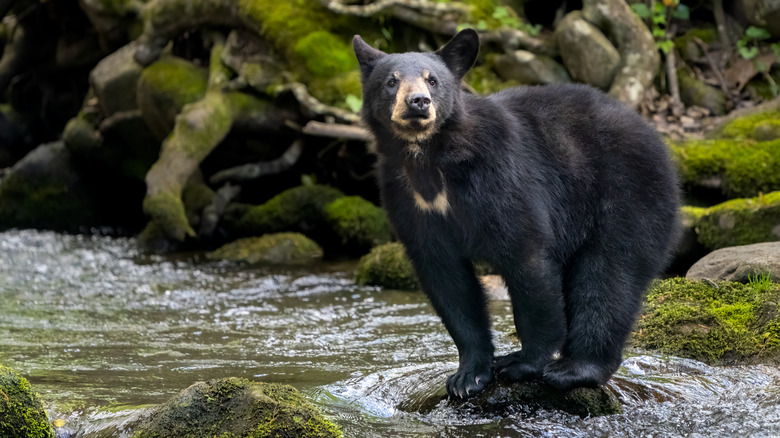Hiking to Abrams Falls
The trail to Abrams Falls sits in Tennessee, but Great Smoky Mountain National Park is also a destination that spills into North Carolina. A collection of captivating mountain ridges and alluring forested terrain defines this sprawling park. Within this setting, a diverse lineup of animal and plant life thrive. Nearly 15 million people visited Great Smoky Mountain National Park in 2021. Many spent time on the park’s trails, open to adventurers year-round, offering a new perspective on the landscapes every season.
While routes like Rainbow Falls, Andrews Bald, and Charlies Bunion continually inspire hikers heading this way, Abrams Falls is equally popular but with a decidedly more dangerous reputation. Hikers are drawn to Abrams Falls not for its stunning height but for the impressive volume of water cascading over the rocky ledges. Abrams Falls sits just 20 feet high, but the powerful water flowing toward the deep pool at the base makes for an incredible sight. The trail leading to the falls is refreshingly scenic as it’s lined with hemlock, pine-oak forests, and rhododendrons.
The cascade and creek found on this trail were named to honor a Cherokee chief whose settlement inhabited a site downstream from Abrams Falls. Visitors who hike to Abrams Falls must complete a 5-mile round trip rated moderately difficult. What makes this inviting route so dangerous isn’t the hike itself, but surprisingly, what awaits at the waterfall.
Dangers that set the trail and cascade apart

The natural beauty of Abrams Falls can be deceptive to visitors unaware of the dangers. The National Park Service points to the cascade’s deep base pool as one that hosts powerful undertows and currents. This should not be treated like swimming holes in other national parks. Jumping into this pool is strictly prohibited, as some visitors who have attempted to swim here have tragically drowned.
The rocks around Abrams Falls have also contributed to the area’s reputation for danger and several fatalities. The ledges surrounding the rushing cascade don’t appear very high, but they’re incredibly slippery due to algae and mist buildup on the surface. Hikers who have attempted to climb these rocks have unfortunately endured fatal falls or serious injuries.
Those who don’t take time to plan out their Abrams Falls Trail experience thoroughly can easily run into trouble when it comes to timing and overall safety. The National Park Service advises hikers to set aside at least three to four hours to hike out and back to the cascade. Leaving too late in the day could mean facing a dangerous and rocky trek back to your starting point in complete darkness. Beyond the risk of falls and injuries linked to hiking at night, this is a less-than-ideal situation in an area home to a population of black bears during certain times of the year.

